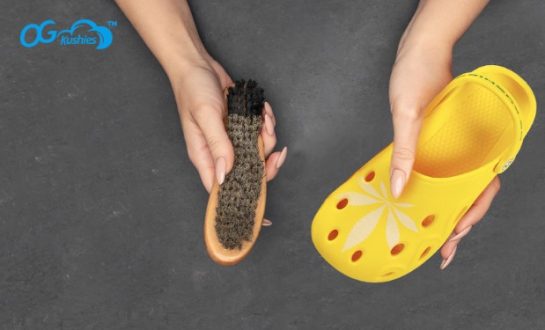BLOG
Compelling Clog Shoes Facts Uncovered: From Then, Till Now
Clog shoes. Some hear it and imagine the clippity-clop of wooden work shoes, tulips, and windmills. Others listen to it and fight the urge to whip out the drain cleaner.
If you’d like to know what clogs started to be and how they have evolved, read on.
What defines a clog shoe?
What are clog shoes? Clog shoes have been around since the 1300s, but that has never stopped them from moving right along. Sturdy, comfortable, and utilitarian, they have historically sacrificed fashion over style. At present, though, clog shoes come in lightweight, updated styles. Newer materials and better designs now suit the rigors of every day.
What are clog shoes good for?
In the past, wood was used as the primary material for clogs. Laborers wore clog shoes as protective footwear. Farmers, factory workers, and miners had clog shoes as part of their work wear. These protected their feet from heavy objects, hot milling conditions, or frostbite.
Wooden clogs are very functional. The Dutch considered them the perfect foot protector. In 1997, they proclaimed it the “official safety footwear.” A CE (Conformité Européene) safety seal was even granted to the clog.
Here in the United States, athletic and non-athletic footwear dominate retail stores. Clog shoes occupy a tiny space in the non-athletic, slip-resistant segment of the market. They are now created from foam resin material, rubber, canvas, and leather, sometimes with wooden soles. These are still considered working footwear but have had some fashionable appearances.
Are clog shoes good for your feet?
Clog shoes have roomy compartments for feet. These are comfortable enough for toes to splay when stretching or bearing bodyweight.
In some cases, clogs can help aid Plantar Fasciitis. The plantar fascia is part of the foot, a connective tissue under it that helps maintain its arch. It also provides shock absorption. It plays a vital role in the mechanical function of the foot. An inflamed plantar fascia leads to painful walking, each step jarring the body.
Clogs naturally reinforce the foot’s arch, supporting and keeping it aligned. For people who work long hours while on their feet, this helps provide good shock absorption. Plantar Fasciitis is then avoided.
Clogs can also be dancing shoes. Clog Dancing is a popular traditional step dance in Wales and North England. Dancers use tough wooden-soled clogs to create sound with their feet. Slate mining workers would compete against each other during work breaks. They can also dance at home, in pubs or on the streets. Clog Dancing was both a form of entertainment and stress release.
Cleaning Clog Shoes
How to clean clog shoes? Because of its place in the mines, factories, and kitchens in the past, clog shoes usually get grimy and dirty. For present-day clog shoes, the material dictates how it is cleaned.
WOOD
Clean gently with a damp cloth or use soap and water. To clean up scratches and dents, run over them with fine sandpaper. If the wood becomes wet, allow them to dry slowly, wipe the clogs clean, and leave them in a dry, room temperature location. Do not apply heat, as this might cause the wood to crack and split.
LEATHER
Vegetable-Tanned Leathers:
Do not wear your vegetable-tanned leather clogs in wet weather. Also, avoid direct sunlight because it is sensitive to water, direct sunlight, and heat. If applying cream or oil, ask for expert advice from the store you buy the product from. Do a spot test because some cleaners, sprays, and oils may darken the leather.
Pull-Up Leathers:
Pull-up leathers are dyed and then treated with oils and waxes. This treatment gives the leather a soft feel. The color migrates and becomes light if it is stretched or pulled further. This can be good sometimes because it renders the leather with a beautiful two-tone effect.
A patina develops over time with scratches and signs of wear. To lessen blemishes, you can rub the scratch on the leather with your fingers.
Nubuck & Suede Leathers:
Wipe leathers with a damp cloth. Use a nubuck and suede brush to remove stains on the surface. Spray nubuck and suede with a protective layer when new to protect against water and stains.
Patent and Coated Leathers:
Spot-clean any spots of dirt using soap and water. Use a damp cloth to wipe the clogs’ surface.
DURABLE FOAM RESIN MATERIAL
Use your washing machine’s gentle cycle with as little soap as possible. Spot clean with a sponge or brush or hand wash with mild soap and cold water. Do not apply heat because it will make your clogs brittle and dry.
A Look at Clog Shoes Today and Where To Find Them
Lucky for you, clogs have gone a long way in materials and design. The latest evolution of clog shoes is now in lightweight, durable foam resin. A specific brand to look out for is OG Kushies.
You can wear them to school, the mall, the park, and everywhere. Chefs love using them with a passion, and those in healthcare also find it goes best with scrubs. They go great with sanitation procedures, being so easy to clean and keep sterile.
They feel great while walking, let your feet breathe, and are quick-dry. Some influencers also say it’s feather-light when you want to kick back and relax. What’s more, OG Kushies are 100% Synthetic, are unisex, fit snugly while being roomy, and are easy to take on and off.
So if you ask, where can I find clog shoes? You can find OG Kushies clogs with the click of a button as part of AllStuff420 merch. Their cannabis-inspired colors and designs are so cool that you’ll want a pair or two.
Clogs for walking, working, and dancing? How about going HIGH fashion? Get your perfect pair of clogs now at OG Kushies!




